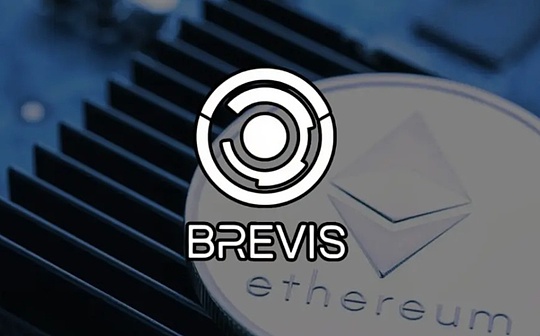
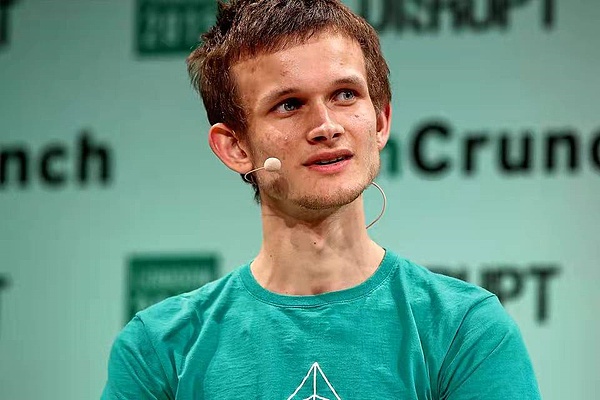
Vitalik Buterin | Founder of Ethereum
One of my most memorable memories of ten years ago was a pilgrimage to the area called “Bitcoin Community” in Berlin: it is a place in the Kreuzberg district, where there are about a dozen stores, just a few awayAll of them accept Bitcoin as a payment method.At the heart of this community is “room 77”, a restaurant and bar run by Joerg Platzer.It not only accepts Bitcoin payments, but also serves as a community center, attracting frequent visitors from all kinds of open source developers, political activists from different factions and other characters of all kinds.

Room 77, 2013. Source: my article from 2013 on Bitcoin Magazine.
Another similar memory about two months ago was PorcFest (“Porc” refers to “porcupine”, which stands for “Don’t Step on Me”), a gathering of liberals in the forests of northern New Hampshire.There, the main way to get food is through small temporary restaurants like “Revolutionary Coffee” and “Rebel Flavor Soup Salad Smoothie”, which of course also accept Bitcoin payments.Here, discuss the deep political significance of Bitcoin and use it in daily life while coexisting.
The reason I mention these memories is that they remind me of the deeper vision behind cryptocurrencies: we are not here to create isolated tools and games, but to build a more freer and more open society in an all-round wayThe economic system, in which various parts of technology, society and economy adapt to each other.
The early vision of “web3” is also of this type, and it is moving in a similarly idealized but slightly different direction.The term “web3” was originally proposed by Ethereum co-founder Gavin Wood, which represents a different way of thinking about Ethereum: Unlike what I originally thought of as “bitcoin plus smart contracts”, Gavin is more broadlyConsidering that it can be considered as one of a series of technologies, it can form a more open basic layer of the Internet.
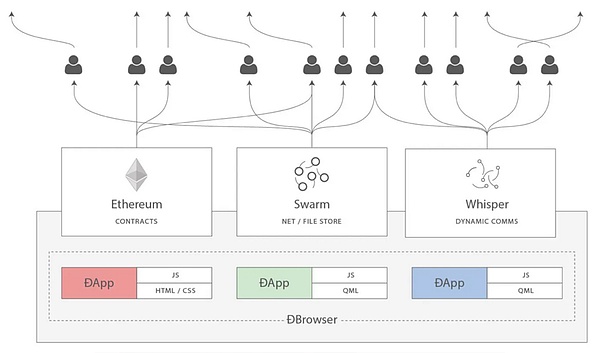
A chart used by Gavin Wood in many of his early speeches
In the 1980s and 1990s, when the free open source software movement began, the software was simple: it ran on your computer and read and write files stored on your computer.But today, most of our important work is collaborative and often on a large scale.Therefore, even if the underlying code of the application is open and free, your data will be routed through a centralized server run by a company that may read your data at will, change rules, or cancel your data at any timeRight to access.So if we want to extend the spirit of open source software to today’s world, we need to allow programs to access a shared hard drive to store content that multiple people need to modify and access.So, what are Ethereum and sister technologies like peer-to-peer messaging (formerly Whisper, now Waku) and decentralized file storage (formerly Swarm, now also IPFS)?They are a public decentralized shared hard drive.This is the original vision for the birth of the term “web3”, which is now ubiquitous.
Unfortunately, these visions have fallen behind the scenes since around 2017.Few talk about consumer cryptocurrency payments, the only non-financial application used on-chain on-the-clock is ENS, and there is a huge ideological rift, where a considerable number of non-blockchain decentralized communities believe that the crypto world is aa kind of interference, not a like-minded spirit and powerful ally.In many countries, people do send and save money through cryptocurrencies, but they usually achieve this through centralized means: either through internal transfers through centralized exchange accounts or through trading USDT on Tron.

After that era, I think the primary reason for this transformation is the rise in transaction fees.When the on-chain write costs only $0.001, or even $0.1, you can imagine people making all kinds of applications that use blockchain in a variety of ways, including non-financial aspects.But when the transaction fee exceeds $100, as happened at the peak of the bull market, there is only one type of user willing to participate—in fact, they become richer because of the price of the currency rises, so they are willing to participate even higher: ThatIt’s a gambler.The right amount of gamblers is acceptable, and I have met many people at the event who initially joined the crypto field because of money but ultimately stayed with ideals.But when they become the largest group of chains for mass use, this changes the public’s perception and internal culture of the crypto space and leads to many other negative effects we’ve seen over the past few years.
Now, fast forward to 2023.We actually have a lot of good news to share in core challenges such as scalability, and in building practical “side missions” toward building a practical future of cyberpunk:
Rollups are beginning to really exist.
Second-generation privacy solutions like Railway and Nocturne are starting to gain attention after a temporary stagnation following a regulatory crackdown on Tornado Cash.
Account abstraction became popular.
Light clients that have been forgotten for a long time have begun to truly exist.
Zero knowledge proofs, a technology we believe will be available for decades, has emerged now, becoming increasingly suitable for developers and will soon be available for consumer applications.
These two things: increasing awareness that unrestrained centralization and over-financing should not be “everything in the crypto space”, and the key technologies mentioned above that are finally beginning to be realized, together, provide us with an opportunity,Let things go in a different direction.Specifically, at least part of the Ethereum ecosystem is truly the kind of license-free, decentralized, censor-resistant, open source-friendly ecosystem we wanted to build in the first place.
What are these values?
These values are shared not only by many in the Ethereum community, but also by other blockchain communities, and even non-blockchain decentralized communities, although each community has its own unique combination of these values and for eachThe emphasis of values varies.
Open Global Engagement: Anyone in the world should be able to participate as a user, observer, or developer, as equal as possible.Participation should be without permission.
Decentralization: Minimize application dependence on any single participant.In particular, even if its core developers disappear forever, the application should continue to work.
Anti-censorship: Centralized actors should not have the right to interfere with the operation of any particular user or application.Concerns about bad actors should be addressed in a higher level of architecture.
Auditability: Anyone should be able to verify the logic of the application and its continuous operation (e.g. by running a full node) to ensure it runs according to the rules claimed by its developers.
Trustworthy neutrality: The infrastructure of the base layer should be neutral, and in a way that even those who do not trust developers can see neutrality.
Build tools, not empires.The Empire attempts to capture users and trap them in walled gardens; tools accomplish their tasks, but otherwise interoperate with a wider open ecosystem.
Cooperational Mindset: Even in competition, projects within the ecosystem work together in shared software libraries, research, security, community building and other areas that are valuable to them together.Each project strives to achieve a positive and convergent game, not only between each other, but also with the wider world.
It is very possible to build something within the crypto ecosystem that does not follow these values.One could build a system called “Layer 2” but is actually a highly centralized system protected by multiple signatures, never intending to turn to something safer.One could build an account abstract system that attempts to be “simpler” than ERC-4337, but at the cost of introducing trust assumptions, which ultimately eliminates the possibility of a public memory pool, making it harder for new builders to join.One can build an NFT ecosystem where NFT content is stored unnecessary on a centralized website, which is more vulnerable than if those components are stored on IPFS.People can also build a staking interface that unnecessarily leads users to the already largest staking pool.
Resisting these pressures is difficult, but if we don’t, we have the potential to lose the unique value of the crypto ecosystem and rebuild a clone of an existing web2 ecosystem with additional inefficient and redundant steps.
Need a sewer to create a ninja turtle
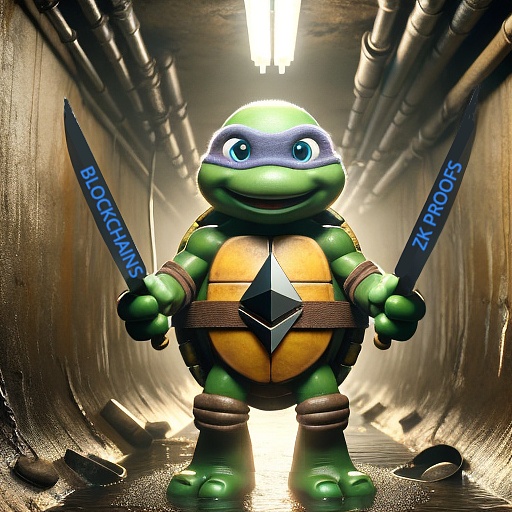
The crypto field is a ruthless environment in many ways.Dan Robinson and Georgios Konstantiopoulos vividly expressed this in a 2021 article that discussed the background of MEV, believing that Ethereum is a dark forest where on-chain traders are constantly facing being traded botsThe risks of utilization are that these robots themselves are also easily attacked and exploited by other robots, etc.This is also true in other aspects: smart contracts are often hacked, users’ wallets are often hacked, and the failure of centralized exchanges is even more eye-catching, etc.
This is a huge challenge for users in the crypto space, but it also provides an opportunity: This means we have a space to experiment, incubate and get fast live feedback on a variety of security technologies to address these challenges.We have seen successful responses to the challenge in different situations:
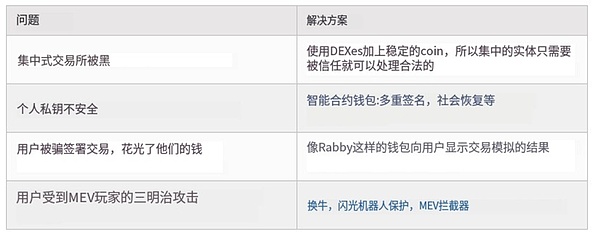
Everyone wants the internet to be safe.Some attempt to make the Internet secure by promoting a method of relying on a single specific actor, whether it is a company or a government, who can serve as a centralized anchor for security and truth.But these approaches sacrifice openness and freedom and lead to a growing tragedy of “split the Internet.”People in the cryptocurrency field place great emphasis on openness and freedom.The degree of risk and high financial stakes mean that security cannot be ignored in crypto space, but for various ideological and structural reasons, a centralized security implementation method is not feasible.At the same time, the encryption space is at the forefront of very powerful technologies such as zero-knowledge proof, formal verification, hardware-based key security, and on-chain social graphs.These facts add up to mean that for the crypto space, an open way to improve security is the only way.
All this shows that the crypto world is a perfect test environment that can actually apply its open and decentralized security approach to a realistic high-risk environment and mature to the point where it can be applied in a wider world.This is one of my visions about idealized and chaotic parts of the crypto world, and how the overall and wider mainstream world of the crypto world translates their differences into symbiotic relationships rather than constant tensions.
Ethereum as part of a broader technology vision
In 2014, Gavin Wood introduced Ethereum as one of a set of tools that can be built, the other two are Whisper (decentralized messaging) and Swarm (decentralized storage).The former was highlighted, but with the shift in financialization around 2017, the latter two unfortunately received less attention.Nevertheless, Whisper continues to exist as Waku and is actively used by projects like the decentralized messaging application Status.Swarm continues to develop, and now we have IPFS, which is used to host and serve this blog.
Over the past few years, with the rise of decentralized social media such as Lens, Farcaster, etc., we have had the opportunity to revisit these tools.In addition, we have another very powerful new tool to join the trio: Zero Knowledge Proof.The most widely used technologies are as a way to improve Ethereum’s scalability, namely ZK rollups, but they are also very useful for privacy.In particular, the programmability of zero-knowledge proof means we can get rid of the “risk of anonymity” and “verified by KYC and thus secure” error dualism while achieving privacy and many kinds of authentication and verification.
An example of this in 2023 is Zupass.Zupass is a system based on zero-knowledge proof. It is incubated in Zuzalu. It is used for certification of face-to-face events, as well as online authentication to voting systems Zupoll, Twitter-like Zucast, etc.The key feature of Zupass is: you can prove that you are a resident of Zuzalu without revealing which member you are in Zuzalu.Additionally, each Zuzalu resident can only have one randomly generated encrypted identity in each application instance (e.g., one vote) they log into.Zupass was very successful and was later applied to Devconnect’s ticketing process over the year.
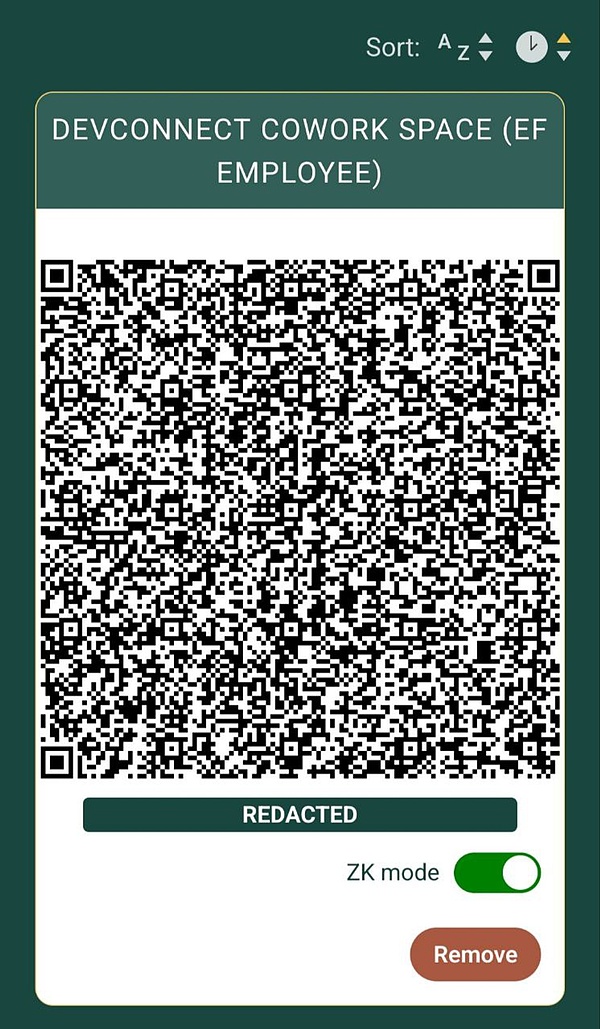
A zero-knowledge proof that I, as an employee of the Ethereum Foundation, have access to Devconnect shared office space.
By far, the most practical application of Zupass is probably voting.Various votes have been conducted, some on political controversy or highly personal topics, and people have a strong need to protect their privacy, using Zupass as an anonymous voting platform.
Here we can begin to see the outline of the Ethereum-style cyberpunk world, at least on a purely technical level.We can hold Ether and ERC20 tokens, as well as various NFTs, and use privacy systems based on invisible address and privacy pool technology to protect our privacy while preventing known bad actors from benefiting from the same anonymous collection.Whether in our DAO, to help decide on changes to the Ethereum protocol, or for any other purpose, we can use zero-knowledge voting systems that can use various credentials to help identify who has the right to vote and who does not: In addition to token-based voting conducted in 2017, we can also have anonymous votes with people who contribute enough to the ecosystem, those who participate in enough events, or one vote per person.
Face-to-face and online payments can be achieved through ultra-low transactions on L2 that utilize data availability space (or off-chain data protected with Plasma) and data compression to provide users with ultra-high scalability.Payment from one rollup to another rollup can be implemented through a decentralized protocol such as UniswapX.Decentralized social media projects can use various storage tiers to store activities such as posts, retweets, and likes, and use ENS (using CCIP on L2) as username.We can achieve seamless integration of on-chain tokens and off-chain proofs and individually held in a zero-knowledge proof through systems such as Zupass.
Mechanisms such as secondary voting, cross-tribal consensus search and forecasting markets can be used to help organizations and communities govern themselves and stay informed, and identity based on blockchain and zero-knowledge proofs can protect these systems from internal centralized censorship and external coordinated manipulation.The impact ofComplex wallets can protect people when they participate in dapps, user interfaces can be published to IPFS and accessed as .eth domains, and hashes of HTML, javascript and all software dependencies can be updated directly on-chain via DAO.Smart contract wallets, originally designed to help people not lose their tens of millions of cryptocurrencies, will expand to protect people’s “identity roots” and create a more secure system for centralized identity providers like “Login with Google”..
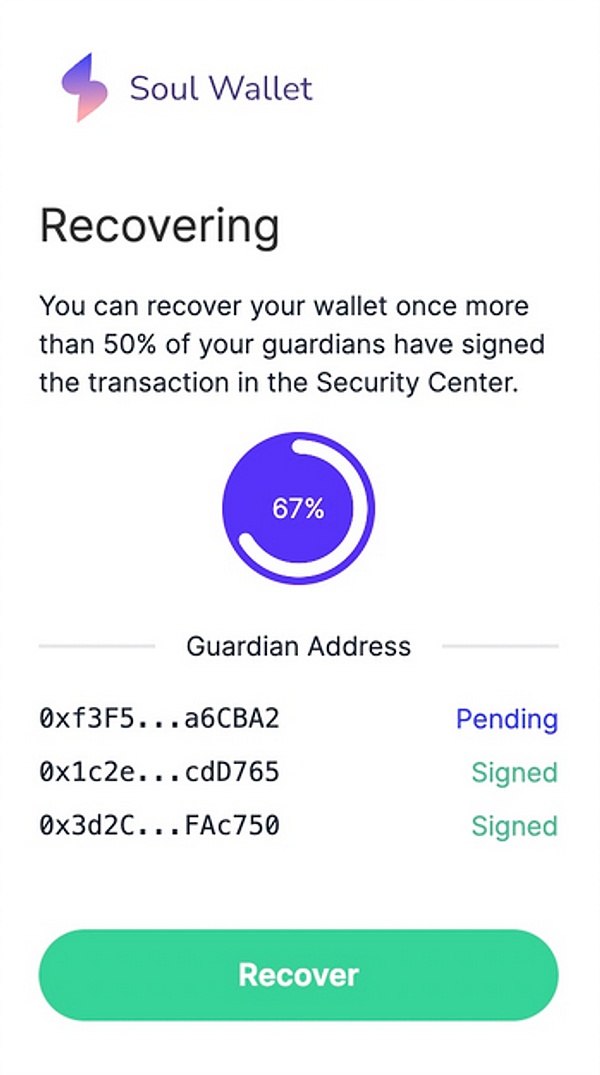
“Soul wallet recovery interface”.I personally prefer to trust my funds and identity to systems like this rather than a centralized web2 recovery system.
We can think of the broader Ethereum ecosystem (or “web3”) as creating an independent technology protocol stack that competes with traditional centralized protocol stacks at all levels.Many people will mix these two protocol stacks, and there are often clever ways to combine them: for example, with ZKEmail, you can even make your email address one of the guardians of your social recovery wallet!But at the same time, there are many synergies using different parts of the decentralized stack, especially if they are designed to integrate better with each other.
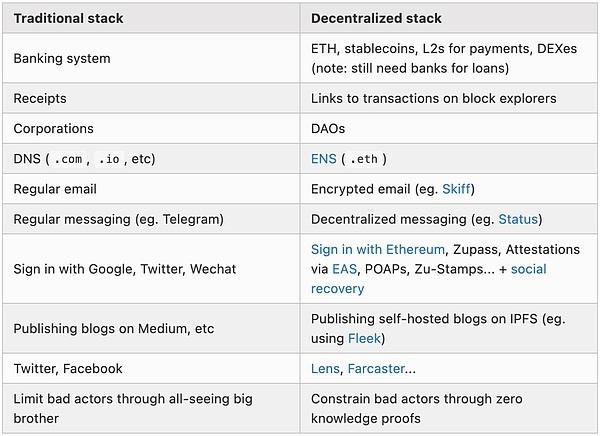
One of the benefits of seeing it as a stack is that it fits well with the pluralism of Ethereum.Bitcoin tries to solve one or at most two or three problems.On the other hand, Ethereum has many sub-communities focused on different fields.There is no single dominant narrative.The goal of this stack is to promote this diversity while working to achieve increasing interoperability between this diversity.
Social level
It is easy to say “people who do X are corrupt influences and bad people, and people who do Y are real.”But it’s a lazy response.To be truly successful, we not only need a vision of a technology stack, but also a social stack, making the construction of a technology stack possible.
In principle, the advantages of the Ethereum community are that we attach importance to incentives.PGP wanted everyone to have the encryption key so that we could actually sign and encrypt the email, and it basically failed for decades, but then we got the cryptocurrency and suddenly millions of people had it in their hands with them.Associated keys, we can start using these keys for other purposes—including back to the starting point of encrypted email and messaging.Non-blockchain decentralized projects often have long-term insufficient funds, while blockchain-based projects can receive $50 million in Series B financing.We have people invest their Ethereum to protect the Ethereum network not for the charity of the stakeholders, but for their own interests – we have earned $20 billion in economic security.
At the same time, motivation alone is not enough.DeFi projects usually start with humility, collaborativeness and maximum open source, but sometimes they start to abandon these ideals as they grow in size.We can incentivize stakers to participate with very high uptime, but it is much more difficult to incentivize stakers to decentralize.It may not be possible to achieve it only through within the protocol.Many of the key parts of the “decentralized stack” described above do not have a viable business model.The governance of the Ethereum protocol itself is significantly definite—which makes it more robust than other governances that are more financialized.That’s why it’s worthwhile to have a strong social layer that can forcefully execute its values where pure incentives cannot be achieved – but without creating a “Ethereum consistency” that becomes a new form of politically correct”concept.

A balance needs to be found between these two aspects, but the more appropriate term is not balance, but fusion.Many people initially came into contact with crypto spaces out of their desire to get rich, but then they began to learn about the ecosystem and became enthusiastic believers in building a more open and decentralized world.
How do we truly achieve this fusion?This is a key question, and I suspect the answer lies not in some magical solution, but in a series of technologies that have arrived through iterations.The Ethereum ecosystem has been more successful than most ecosystems in encouraging a cooperative mentality between the second layer projects.In particular, the massive public goods funding for the RetroPGF rounds of Gitcoin Grants and Optimism is also very helpful, as it provides another revenue channel for developers who are reluctant to sacrifice their values, even if they don’t see any traditional business.model.But these tools are still in their early stages, and there is still a long way to go to improve these specific tools, as well as identifying and cultivating other tools that may be more suitable for a particular problem.
This is where I see the unique value proposition of the Ethereum social layer.There is a unique mix of middle grounds that values motivation and is not consumed by them.There is a unique blend that values both warm and cohesive communities while remembering that feeling “warm and cohesive” from the inside can easily look “oppressive and exclusive” from the outside, and emphasizes neutral, open source and censorship-resistant hardnessStandardize as a prevention risk of community-driven driving to go too far.If this mixing is achieved well, it will in turn be in the best position to achieve its vision at the economic and technical level.








